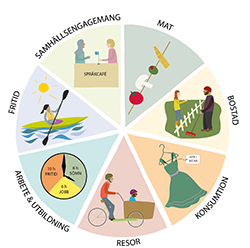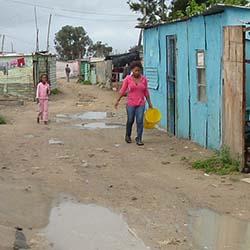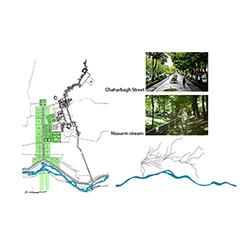The Swedish political week in Almedalen, Visby, is the annual meeting place of policy makers, lobbyists, researchers, public service, NGOs and private companies. From a scientific community perspective, this year’s meetings are particularly interesting as the Swedish government is preparing a four-year research proposition, to be presented late October. Three key words for the cross-cutting challenges that are identified are climate, health and digitalisation, all of which relate quite closely to sustainable urban development.
The links between climate change and urbanisation are well explored and reported. The immediate reduction in impact of urban activities on climate when it comes to greenhouse gas emissions is a primary objective in national, regional and local Agenda 2030 policies and strategies.
A sustainable city is also a healthy city. Investments in citizens’ health through urban planning, accessibility to green areas and other public open spaces like parks improve the overall perceptions of health. Considerable scientific support can be found regarding the benefits of biking lanes, parks, sports fields, walking areas and other investments in health promotion.
Digitalisation and digitisation are integrated strands of a sustainable development. What first comes to mind may be ‘smart cities’ and the controversial concept is certainly a significant model that has got much attention; this would include the digitisation of vast amounts of data for transport, energy and municipal services. However, the digitalisation of cities and cities’ activities may be even more important.
A particular dimension of digitalisation is the actual monitoring and reporting of the Urban Sustainable Development Goal, the 11th of the 17 Sustainable Development Goals, SDGs, adopted by the United Nations in September 2015.
Mistra Urban Futures’ researchers from all platforms recently published an article in Environment & Urbanization on the outcome of a pilot project testing the indicators and targets of the urban SDG in five intermediate cities across the world (the four platforms and Bangalore, India ). The article can be downloaded for free.
The SDG data present some specific challenges to researchers and statistic presentations as the information is collected under varying conditions, by teams with varying backgrounds and expertise - let alone the comparability of indicators between urban areas in different parts of the world.
‘In order for the SDGs to become effective policy tools for ensuring and monitoring sustainable development, reliable and robust data at comparable scales are crucial’, writes the research team of Mistra Urban Futures.
The representation of the data collected is a particular challenge, when it comes to visualising data and to present the information in a way that makes sense to policy-makers as well as members of the public – without compromising the quality of the data. Mistra Urban Futures will explore opportunities to develop our ways of providing and presenting such information to whom it may concern, with accessibility as a key goal.






